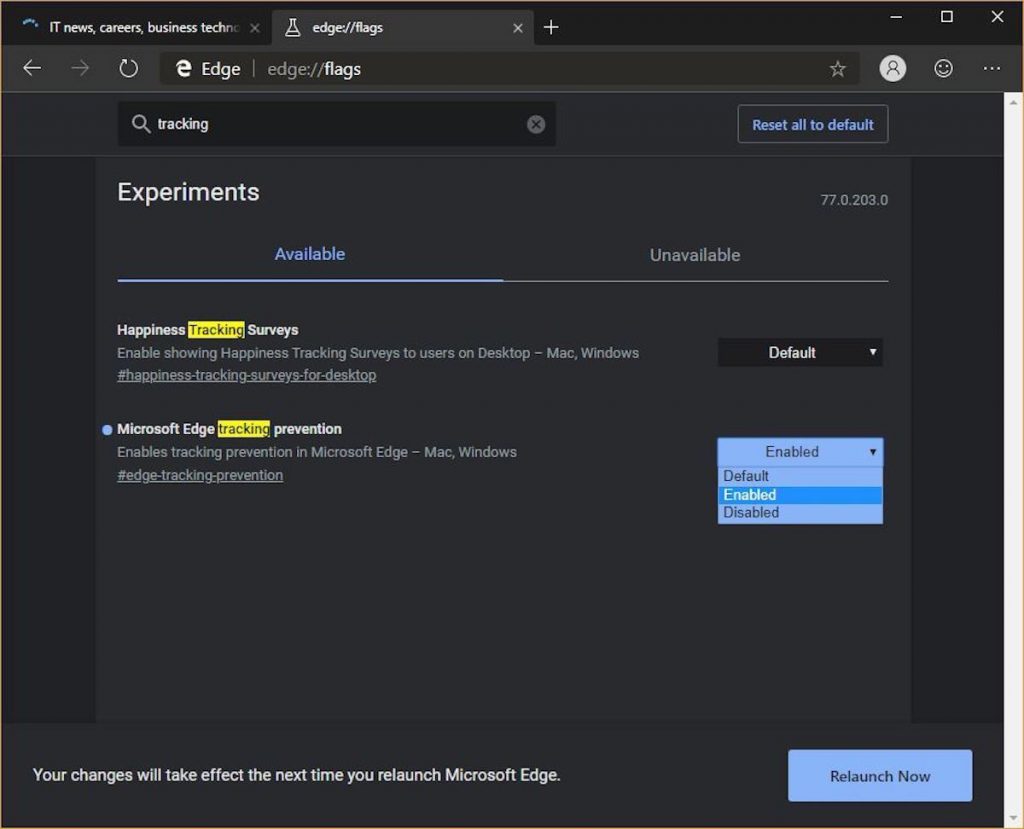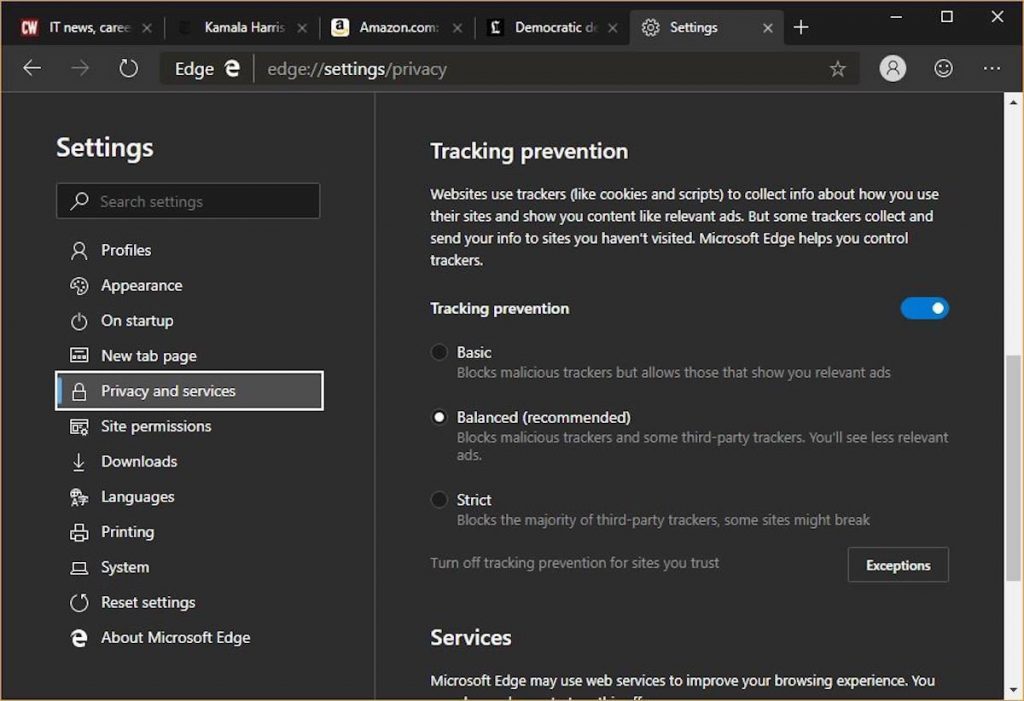By adding ‘tracking prevention’ to the Chromium-based version of Edge, Microsoft can show it’s putting a little distance between its browser and Google Chrome.
Microsoft is the latest browser also-ran to tackle Google’s leader, Chrome, by introducing anti-tracking expertise to Edge.
Calling the feature “tracking prevention,” Microsoft described it in terms much like those used by rivals Mozilla and Apple, which have cookie blockers in place in their browsers, Firefox and Safari. “Tracking prevention is designed to protect you from being tracked by websites that you aren’t accessing directly,” wrote Brandon Maslen, senior software engineer, and Ryan Cropp, software engineer, in a June 27 post to a company blog.
Because Microsoft’s just started to show its anti-tracking talents to users, it’s hidden them behind an option flag; in Edge, it’s reached by typing edge://flags in the address bar. (Edge’s Chromium roots show here; the chrome://flags command has been long known to hard-core Chrome users.) Once the user has selected “Enabled” as the setting for the “Microsoft Edge tracking prevention” option, then relaunched the browser, Edge will begin stymying trackers.
Additional settings appear in Edge’s Settings that let users dial up or dial down tracker blocking’s aggressiveness.
Only the Windows version of the “Canary” build – the roughest, least reliable of the eventual four channels Microsoft will maintain – currently contains tracking prevention. The macOS Canary build will have the feature shortly; next up, certainly the Windows 10 and macOS Dev builds. Because the “full-Chromium” Edge – the browser Microsoft is re-creating this year based on the Chromium open-source project – also runs on Windows 7, 8 and 8.1, the blocking will eventually come to those OSes, as well.

It’s unclear how long it will take Microsoft to flesh out Edge’s tracking prevention. Microsoft’s Maslen and Cropp made it sound as if the effort were just beginning. “We’ll use your feedback on this experimental feature in the Canary and Dev channels to understand potential impact to web compatibility and iterate on the experience to be helpful and easy to use,” they said.
That makes sense. For example, Mozilla, whose Firefox arguably boasts the most comprehensive anti-tracking scheme, spent years working on the defensive technology, first restricting it to the browser’s privacy mode then cautiously integrating it with the browser as a whole. The deliberate work was necessary, Mozilla said, because tracking blockers have a habit of “breaking” sites. It was only earlier this month, in fact, that Mozilla felt comfortable enough with the feature to turn it on by default.[
It may not have been a coincidence that Microsoft touted tracking prevention not long after Mozilla switched on its Enhanced Tracking Protection (ETP). The privacy feature has been one of Mozilla’s biggest selling points for Firefox, and the message has made an impression: The Washington Post last week said Chrome “looks a lot like surveillance software” because it doesn’t try to stem tracking, and recommended Firefox as the browser best able to block trackers.
“Having the world’s biggest advertising company make the most popular web browser was about as smart as letting kids run a candy shop,” asserted Geoffrey Fowler, the newspaper’s technology columnist. “It made me decide to ditch Chrome for a new version of nonprofit Mozilla’s Firefox, which has default privacy protections.”

Microsoft would want to be on the anti-Chrome side of this fight, seeing as how its browsers’ influence, like that of Firefox’s, has been greatly undermined by Google. Edge isn’t going to grow much by stealing share from Firefox – Mozilla’s browser has under 10% by the last measurement – but has to convince Chrome users on Windows to return to a Redmond-made application.
Speaking of Chrome, Edge’s tracking prevention can also be seen as Microsoft’s loudest-yet statement of independence. Although Microsoft is now beholden to the Chromium project for its underlying technologies (and Google essentially runs Chromium), the company has hinted that it would not mimic Chromium/Chrome in all respects. Staking out a position that Google is unlikely to wholeheartedly adopt is one way to demonstrate that Edge is not just Chrome with a different name.
